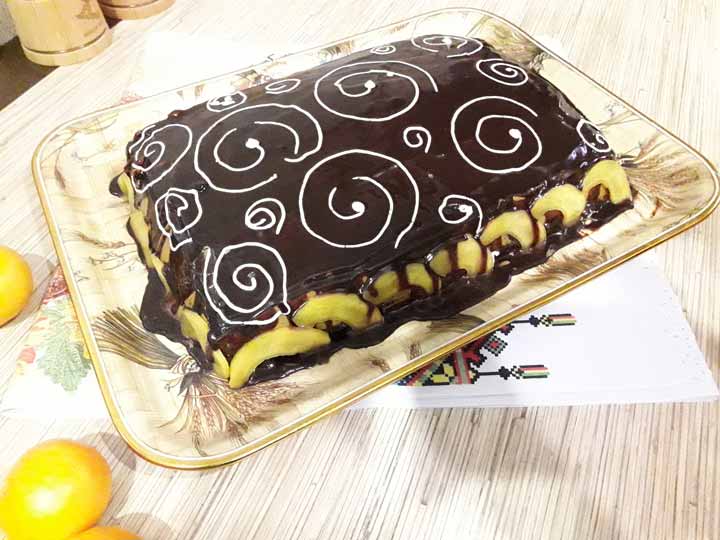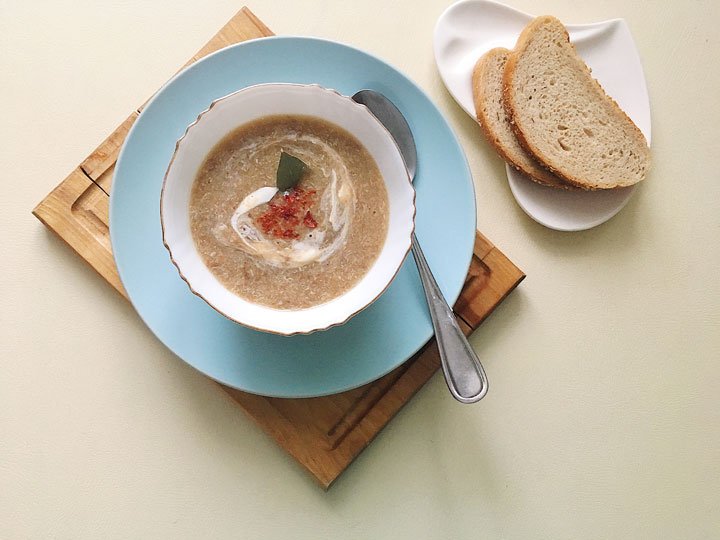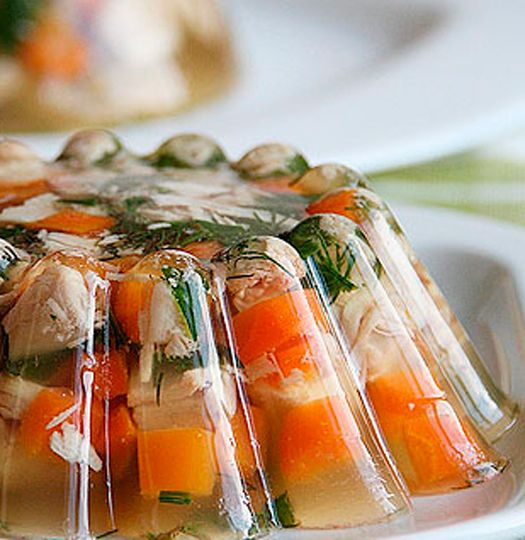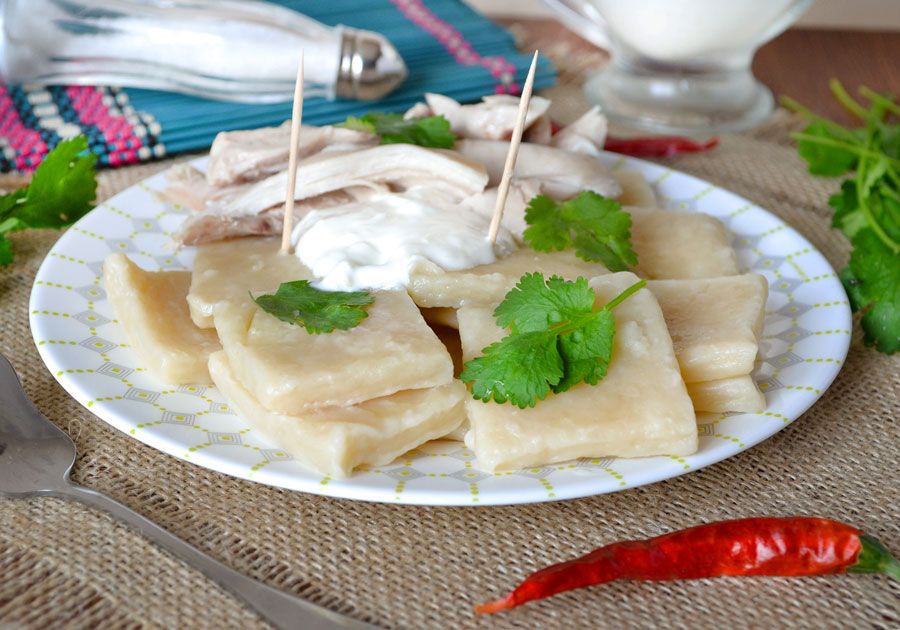Moussaka Greek
- Nutrition Facts
- Calories: 270
- Protein: 5.7
- Fats: 23.1
- Carbohydrates: 7.8
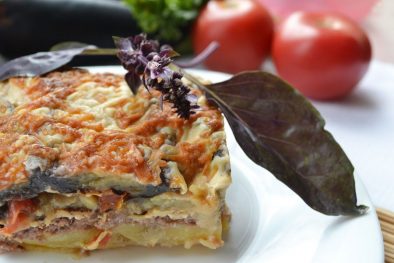
The summer and autumn period of time for culinary masters is the most favorable time when almost any country can boast of an abundance of vegetable dishes. Today we want to focus on an amazingly beautiful vegetable - eggplant, which conquered absolutely all existing world cuisines with its taste. With the use of "blue ones", as they are also commonly called, a casserole with a very interesting name - moussaka is very popular. Moreover, this dish is national at the same time in several countries. Moussaka is proud of Greece, Moldova, Bulgaria, and indeed the whole Eastern cuisine, however, the variety of recipes for preparing, for example, Greek moussaka can be a long time to be surprised. We offer a short excursion into the world of exotic vegetable casserole with minced meat and amazing white Bechamel sauce.
History of moussaka
"Maguma" - was the progenitor of the current moussaka - ancient Arabic manuscripts testify to this, in which culinary records about this dish have been preserved, something remotely resembling Mrs. moussaka in a modern version. Naturally, no one knows the exact date of the appearance of the casserole, but some sources contain information that ancient Greek culinary keeps the recipe for classic eggplant moussaka for about three millennia. There is also an assumption that the Arabic word "musaqqa" served as the basis for the name of our dish, and in translation it means "chilled".
By the way, chilled moussaka lends itself perfectly to serving and remains as tasty as a freshly cooked, slightly cooled dish. Another version of the origin of the exotic casserole says that "moussaka" is translated as "juiciness" and, most likely, it is reliable, because in terms of juiciness this multi-layered dish surpasses all existing casseroles in the world. Ladies and gentlemen, if you have a great desire to surprise your friends with Greek cuisine, then to your attention is an interesting recipe for eggplant moussaka - read carefully, watch and repeat after us.
Main Ingredients:
- Eggplants - 7 pieces;
- Young potatoes - 3 pieces;
- Vegetable oil - for frying;
- Veal - 1 kg;
- Dry white wine - 5 tbsp. spoons;
- Tomato - 5 pieces;
- Turnip onion - 2 heads;
- Parmesan cheese - 50 g;
- Salt and cinnamon - to the taste of the cook.
Bechamel Sauce Ingredients
- Butter rustic - 100 g;
- Fine flour - 2 tbsp. spoons;
- Milk - 3 tbsp.;
- Salt - to the taste of the cook.
Step-by-step recipe for eggplant moussaka
- We wash the veal, process it from veins and films, and then chop it into pieces suitable for manual twisting.

The veal must be cleaned of films, washed and cut into small pieces
- Let's transform the meat into minced meat, and it doesn't matter at all how you do it - in a meat grinder or chop with a knife, the main thing is not to get meat porridge.
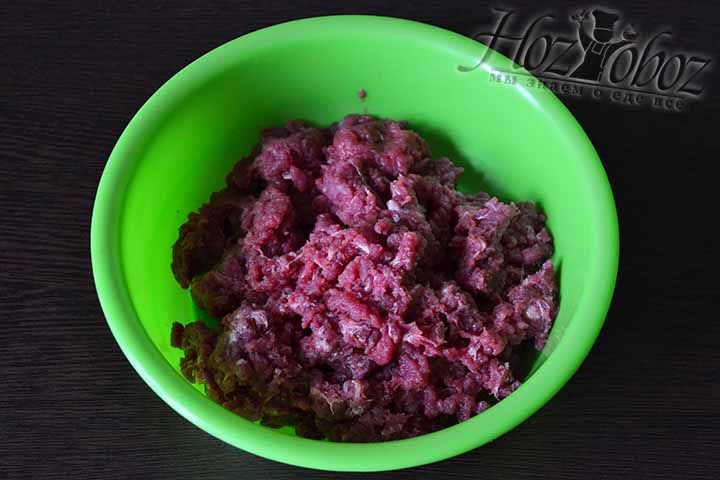
The meat should be chopped, and it can be ground or chopped.
- Finely chop the peeled onions - ideal if they are tiny cubes.
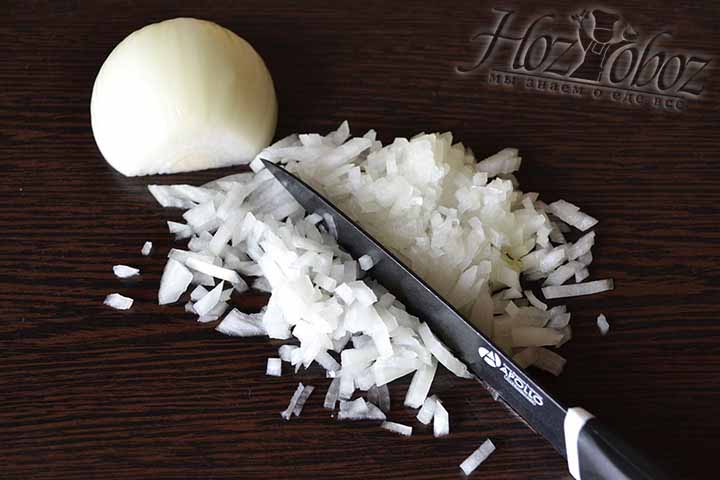
Peel the onion and cut it smaller.
- In a well-heated frying pan, sauté the onion a little with the addition of minced meat, which must be salted abundantly. If desired, add dry white wine and cinnamon.
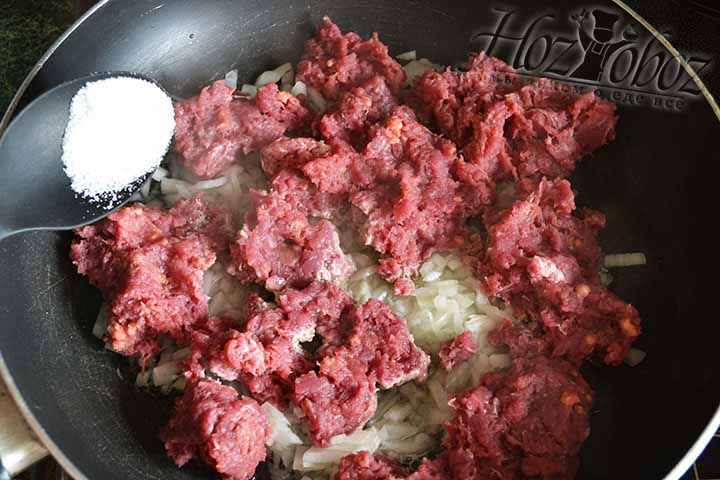
Fry the onion in vegetable oil and add the minced meat. If desired, you can pour a little dry white wine and season the minced meat with cinnamon.
- Next, close the lid and simmer for 15 minutes.
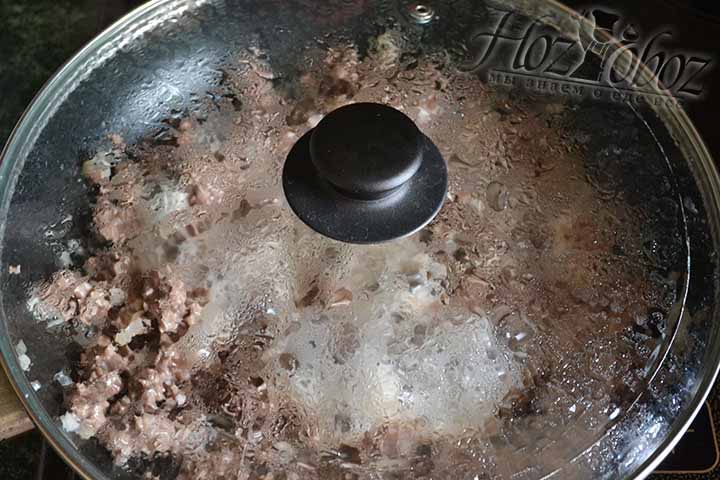
Stew minced meat for about 15 minutes, closed.
- While the meat is half cooked, peel the potatoes.
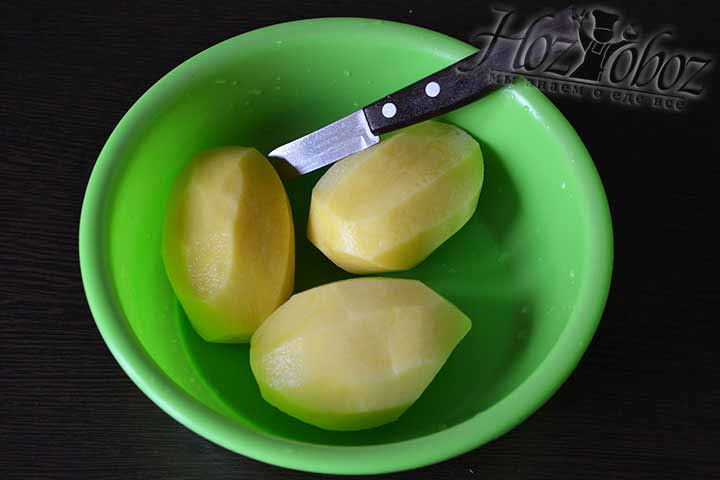
Potato tubers should be peeled and washed.
- Cut into circles 5-7 mm thick.
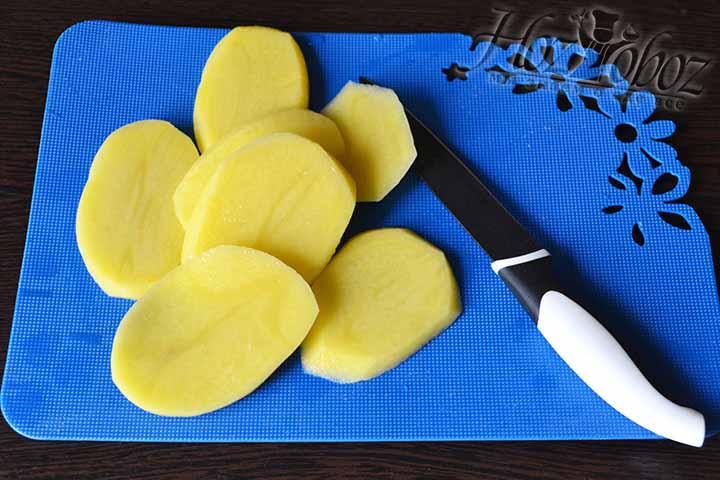
Cut each potato into rings about 0.5 cm thick.
- Now let's prepare the 1st layer for moussaka - fry the potato figures in vegetable oil for 3 minutes on each side.
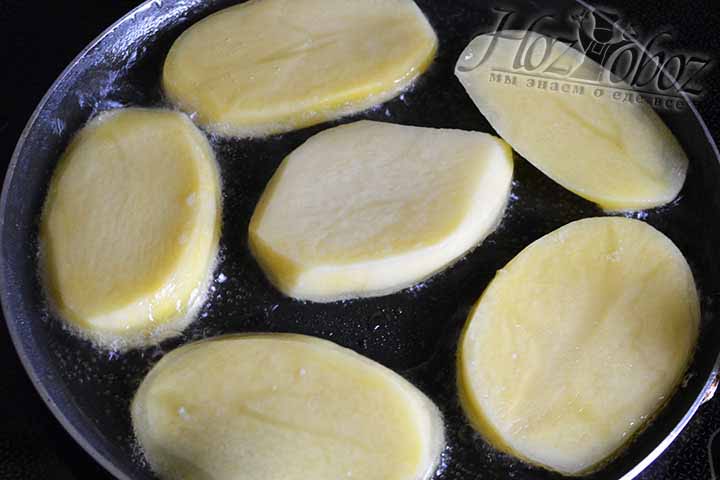
Fry the potato plates in vegetable oil on both sides for about 3 minutes.
- Put in a container.
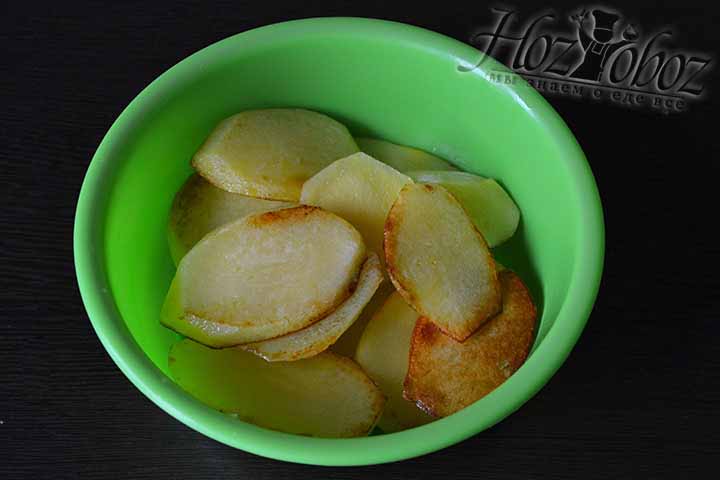
Put a layer of potatoes in a moussaka baking dish.
- Next, we proceed to the second preparatory process - it is the most important in cooking. We wash the eggplants, wipe them dry, cut off the buttocks and the stalk, and then cut into 5 mm tongues.
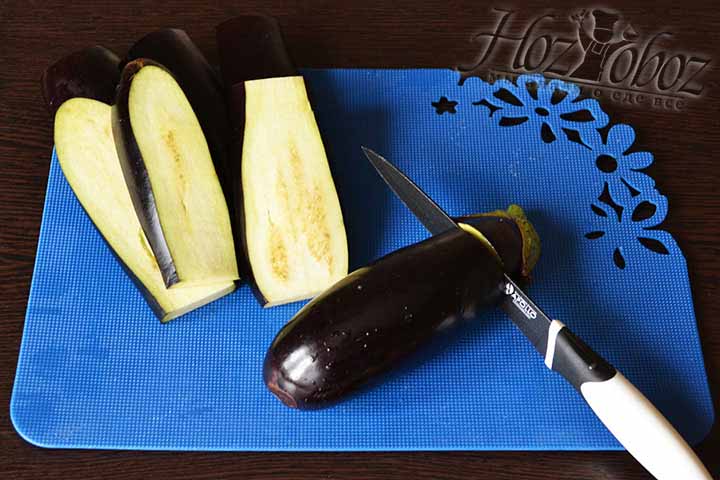
Eggplants should be washed, dried and cut lengthwise into plates half a centimeter thick.
- Lay out on the board, salt and let the vegetables rest - this will save the eggplant from bitterness.
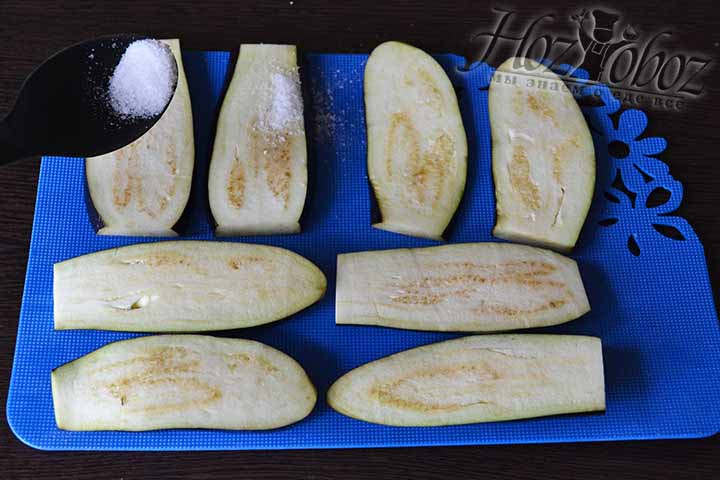
Put each eggplant tongue on the board, sprinkle with salt and leave to let the juice in for 5-7 minutes.
- Then fry all eggplant tongues on both sides, like potatoes - in oil.
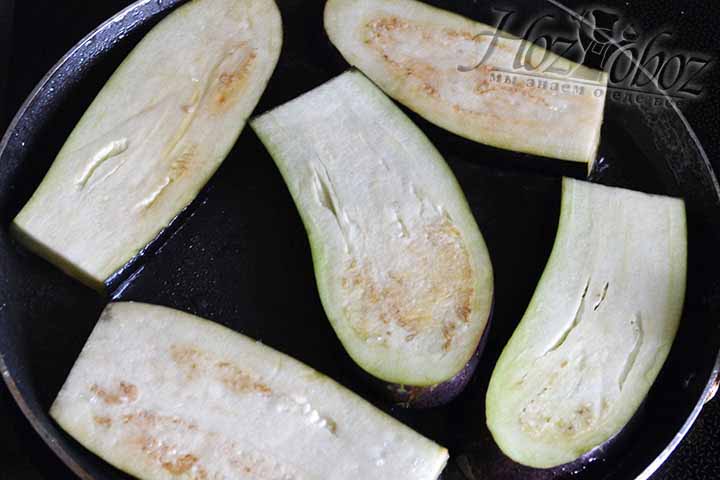
Wipe the tongues dry and fry on each side in the same way as potatoes.
- We distribute them on napkins or a paper towel - in this way we free the main components of moussaka from excess fat.
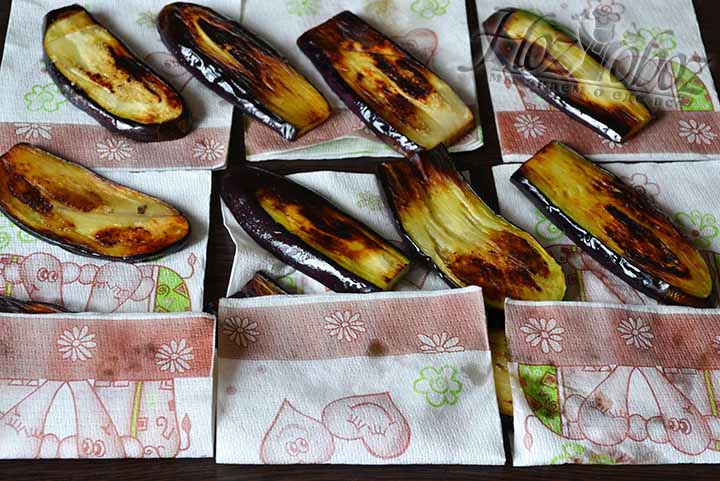
Put the fried eggplants on paper towels and remove excess fat.
- While the eggplants give off excess vegetable oil, we will prepare the French Bechamel sauce, without which this dish cannot be imagined. First, heat up the butter.
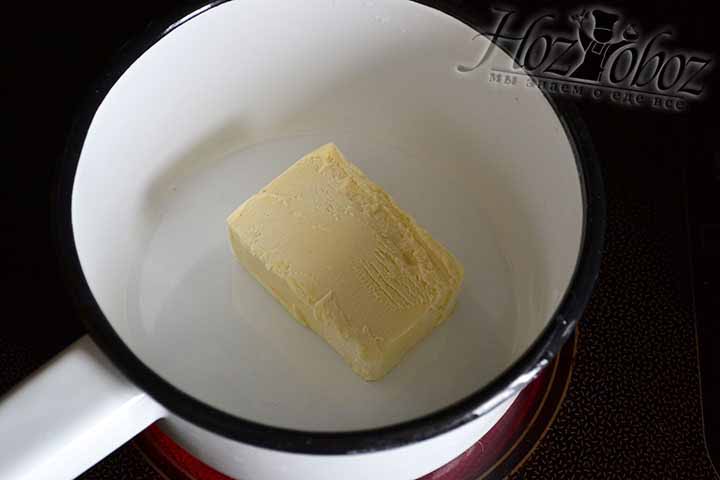
For the bechamel sauce, heat the butter in a saucepan.
- We add flour to it in small portions.
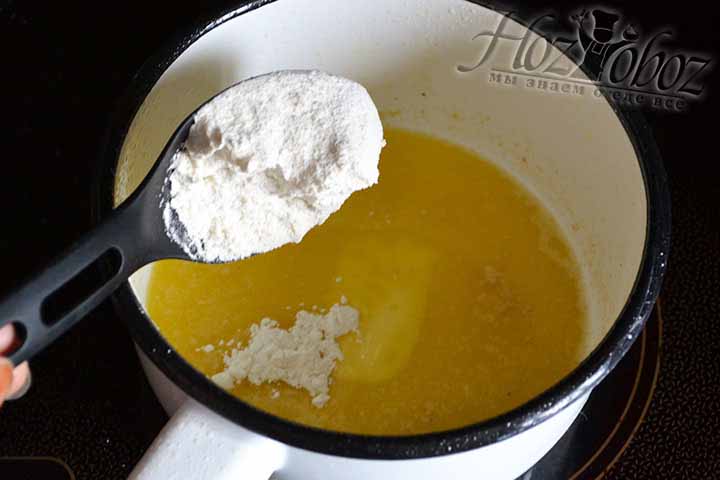
Add a little bit of flour.
- How to fry them together until the characteristic aroma of baking.
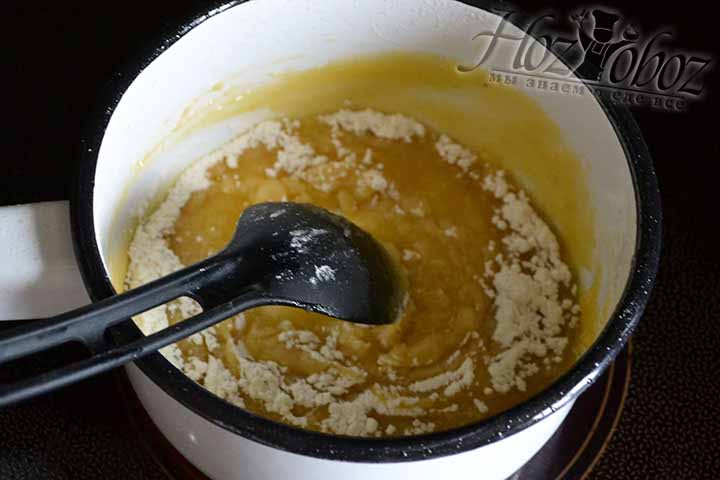
Fry the flour in oil for about 3 minutes.
- Supplement with milk, thoroughly mixing all the ingredients with a whisk until thickened, bring to a boil.
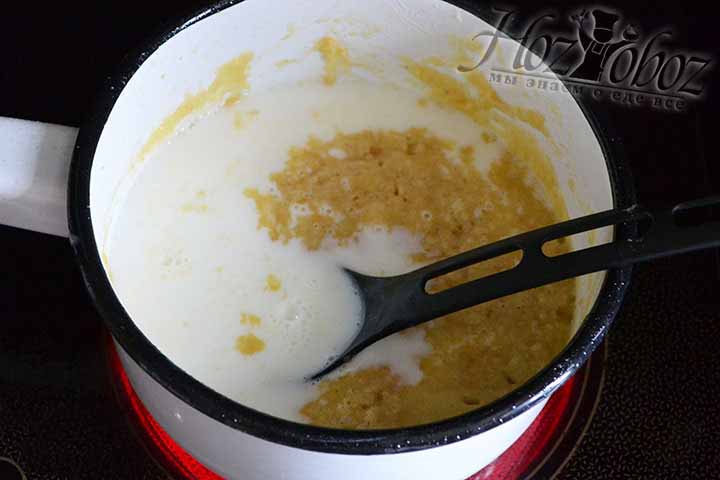
Pour milk in portions and let the sauce boil, stirring all the time.
- Reduce the stove to zero and salt the sauce.
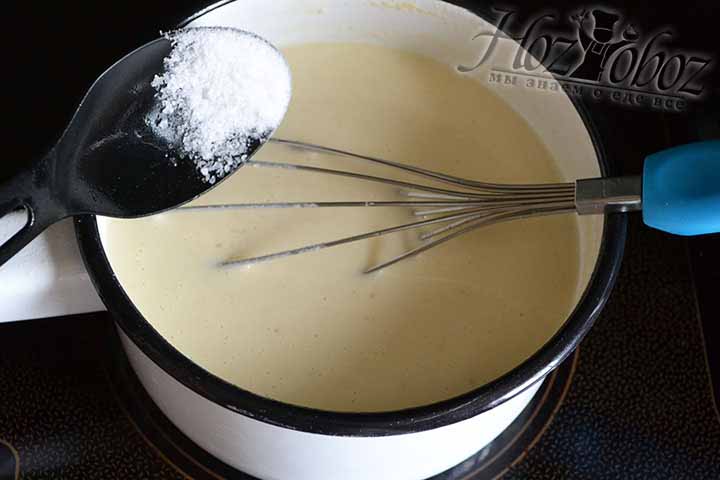
Set the fire to a minimum and season the bechamel with salt.
- Cook "Bechamel" for 10 minutes in total and cool.
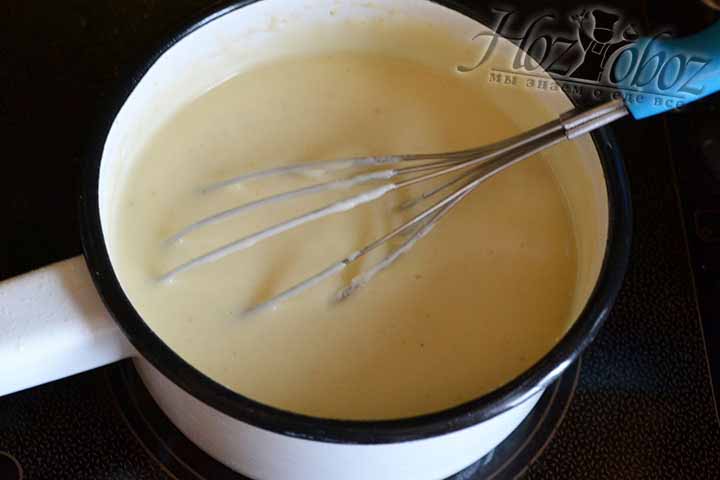
It is customary to cook the sauce for 10 to 20 minutes, stirring occasionally.
- We move the eggplants into a container so that they do not wind up.
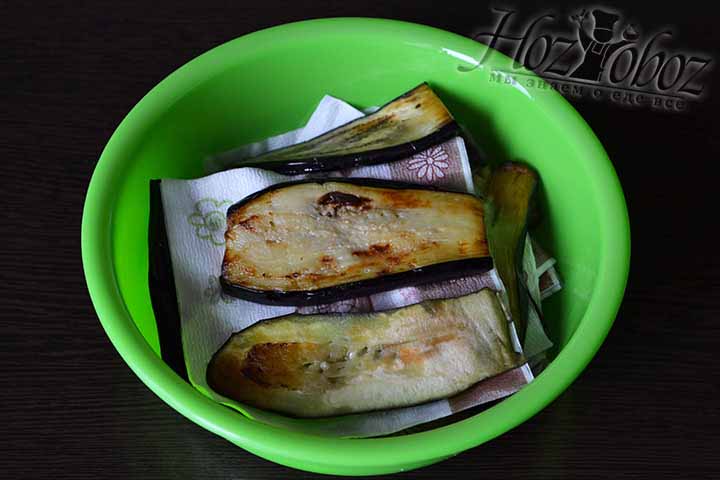
Put eggplant in a bowl.
- We proceed to the most important step in the preparation of moussaka - the formation of layers. At the bottom of a glass container, which is intended for heat treatment in the oven, or in a ceramic baking dish - dishes where it is preferable to cook a casserole, lay out the fried potatoes and cover them with minced meat.
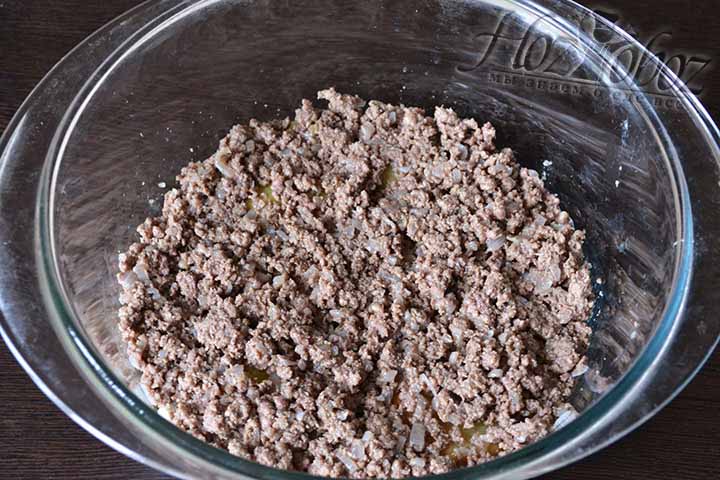
Put the stewed minced meat on top of the potatoes in a baking dish.
- Sprinkle generously with grated parmesan - we used cheese prepared in advance and packed under cling film.
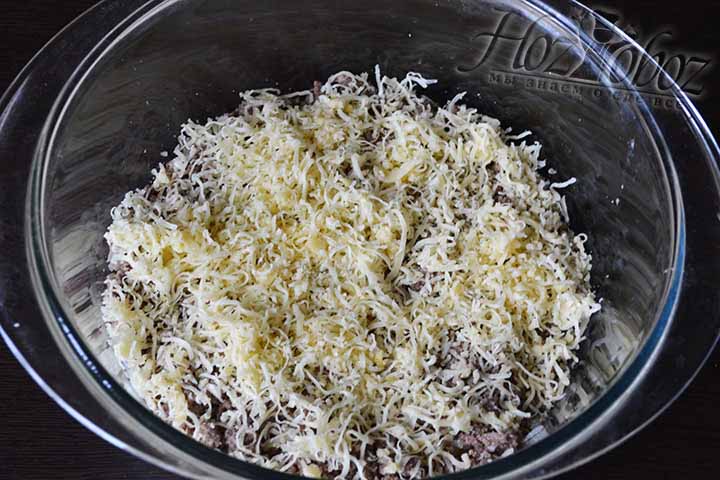
Sprinkle moussaka with chopped Parmean.
- Our eggplants will go next, but not all, but only half, and the layer that is created from them should be quite dense.
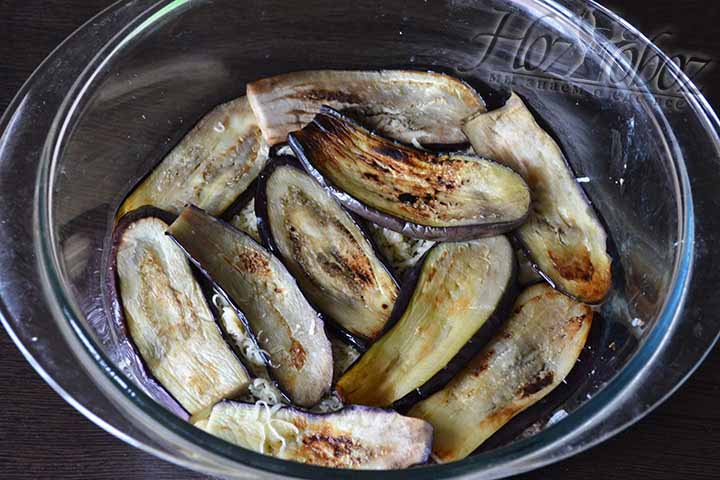
Now it's time to spread the eggplant in a dense layer.
- Pour in white sauce - it has thickened well, therefore, it is most convenient to distribute it evenly over the surface with a spoon.

Fill the casserole with white sauce.
- Then there will be nice circles of small tomatoes.

We spread the plates of chopped tomatoes.
- Parmesan layer again, but very small.
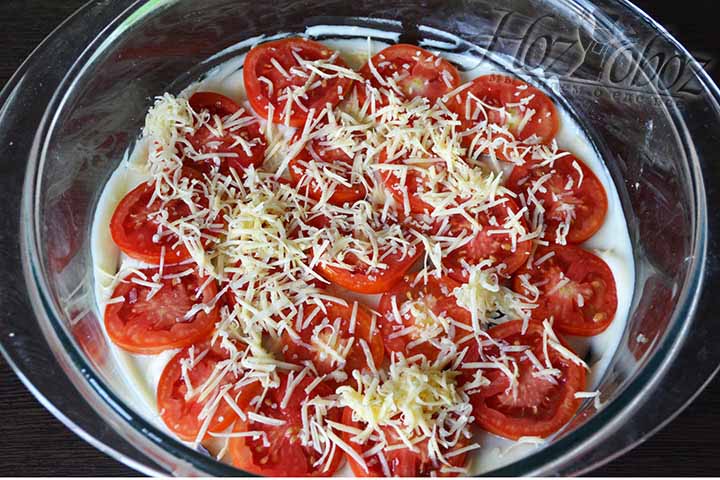
Sprinkle everything with cheese again.
- Next, lay out the remaining eggplant.
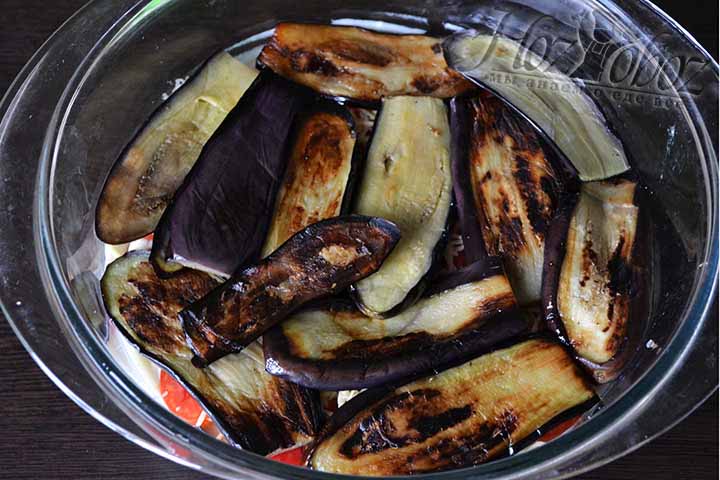
Another layer of eggplant.
- We complete the preparation with the magnificent Bechamel, which is considered the main base sauce not only for preparing other sauces, but for dressing dishes, as in our case.
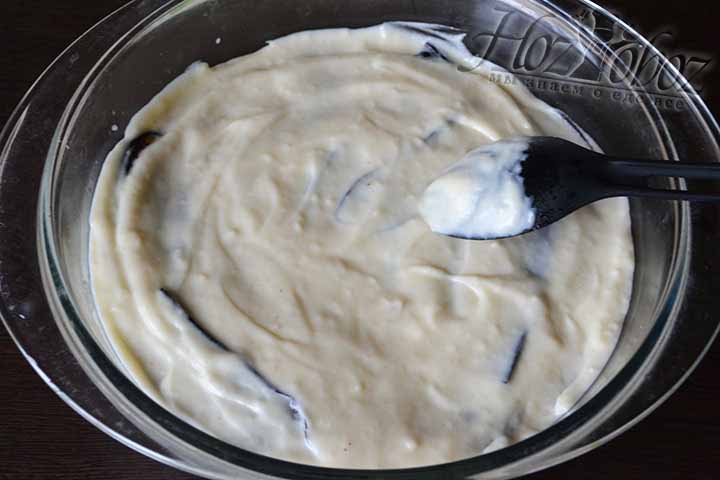
Top the moussaka with bechamel sauce.
- We move the container with Greek moussaka to the oven preheated to 200 ° C.
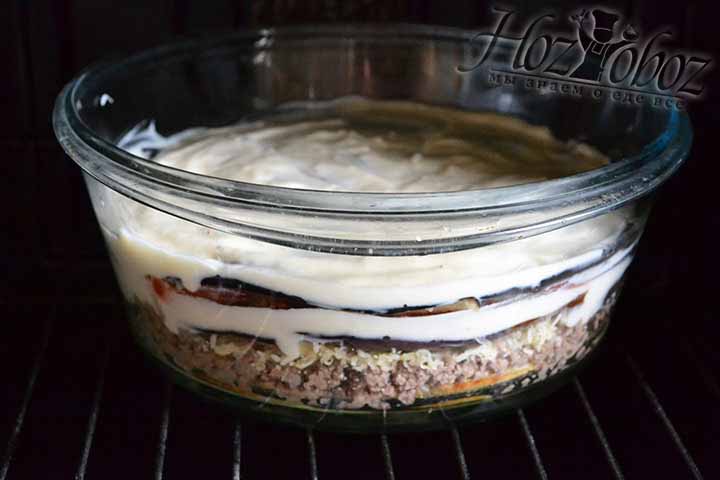
Preheat the oven to 200 degrees and set the moussaka to brown.
- We mark 60 minutes and bake the dish at a lower temperature.
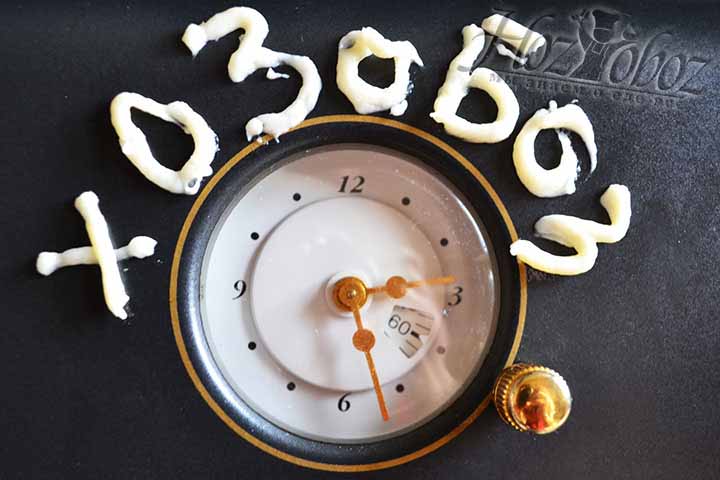
After a couple of minutes, reduce the temperature to 160 - 180 degrees and cook the casserole for about 60 minutes.
- After an hour, the surface of the casserole will be well browned, but we still need to sprinkle it, as planned, with a small amount of the remaining cheese, and then bring it to full readiness.

After the allotted time has passed, the casserole will become higher and it will need to be sprinkled with a little cheese. After that, put the moussaka back in the oven and let it bake for about 5 minutes.
- We serve moussaka with eggplant to the table in a warm or chilled form - the latter is considered very correct.

You can serve the dish to the table warm and cold, but the Greeks themselves still prefer to use it as a cold appetizer.
Variations of the dish
- Some moussaka recipes include not only eggplant, various minced meat, potatoes and tomatoes, but also zucchini, carrots, bell peppers or rice in the list of ingredients.
- Instead of sauce, sometimes just grated cheese is used in a very large amount, with which each vegetable layer of moussaka is layered.
- In restaurants, moussaka with eggplant is always prepared in portioned pans and served directly in them, because the juicy base of a recently prepared dish does not allow beautifully placing the casserole on a separate plate without first cooling it.
- Vegetarian moussaka is prepared without meat and is very popular with socialites who keep their figure, but cannot refuse delicious food.
Is there any benefit in the Greek casserole with eggplant and minced meat
A royally appetizing dish in appearance has not only a unique taste, but is also able to saturate the body with all the necessary substances. The vitamin complex of the present vegetables is perfectly combined with dietary veal and white sauce carbohydrates. By the way, minced meat, which is present in this recipe, is digested much easier than whole pieces of meat - this gives the body the necessary supply of proteins and amino acids for a long time without harm to the digestive organs.
At the end of the preparation, I would like to thank you, dear readers, for your patience and curiosity. Exotic dishes, albeit often arouse curiosity, but at the same time they frighten with their unusualness. Our moussaka, although prepared in the Greek version, can easily fit into your usual diet and become as beloved as everything else.





